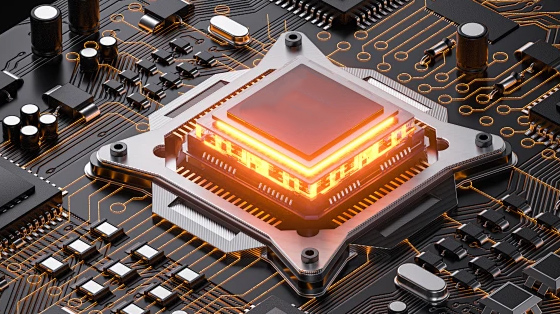Hello! now About Us
Emergence of Next-Generation Semiconductors: Revolutionizing Industries Across the Globe
10/29/2022 10:46:15 AM
Article: "Emergence of Next-Generation Semiconductors: Revolutionizing Industries Across the Globe"
Global - February 15, 2024
In a pivotal moment marking a new era for electronic devices and information technology, the semiconductor industry has taken monumental strides toward developing next-generation technologies poised to transform numerous sectors. With breakthroughs in materials science and engineering, these advanced semiconductors promise not only enhanced computational capabilities but also significant reductions in energy consumption-a crucial development given growing concerns over environmental sustainability.
Advancements in Material Science Drive Innovation

Moreover, the advent of two-dimensional (2D) materials-such as graphene and transition metal dichalcogenides (TMDCs)-is opening up new possibilities for ultra-low power electronics and flexible, wearable devices. These atomically thin sheets offer exceptional electrical conductivity and mechanical strength, enabling the creation of innovative form factors previously unimaginable.
Integration of Artificial Intelligence Empowers Smart Devices
Concurrently, the integration of artificial intelligence (AI) algorithms into hardware architectures is driving the evolution of smart devices. By embedding AI capabilities directly onto semiconductor chips, manufacturers aim to enable devices to learn from user behavior, adapt to changing conditions, and optimize resource utilization in real time. This trend, known colloquially as "intelligent computing," holds immense potential for enhancing user experiences across smartphones, wearables, home automation systems, and industrial machinery.
For instance, AI-enhanced image recognition processors allow cameras to automatically adjust settings based on scene analysis, ensuring optimal photo quality under varying lighting conditions. Similarly, predictive maintenance modules embedded in factory equipment can anticipate failures before they occur, significantly reducing downtime and maintenance costs.
Quantum Computing Nears Practical Application
On the horizon looms the tantalizing prospect of quantum computing, which leverages the principles of quantum mechanics to perform calculations exponentially faster than classical computers. Although still in the experimental phase, recent demonstrations have shown that qubits-the fundamental units of quantum information-can indeed outperform conventional bits when dealing with specific complex problems.
Leading research entities have made substantial progress in increasing the number of stable qubits, improving error correction methods, and exploring practical applications in cryptography, drug discovery, and financial modeling. While full-scale commercialization remains several years away, the foundational work conducted thus far suggests a transformative impact once quantum computing matures.
Challenges and Opportunities in Global Supply Chains
However, the path forward for next-generation semiconductors is fraught with challenges. Disruptions caused by pandemics, natural disasters, and geopolitical tensions have highlighted vulnerabilities in global supply chains. Manufacturers must navigate these obstacles while simultaneously investing heavily in research and development (R&D) to stay competitive.
To address these issues, collaborative initiatives between governments, academia, and private enterprises are gaining momentum. These partnerships aim to foster innovation ecosystems that encourage knowledge sharing, streamline regulatory frameworks, and ensure access to essential raw materials. Such efforts not only facilitate the rapid deployment of advanced semiconductor technologies but also help mitigate risks associated with reliance on single-source suppliers.
Looking Ahead: A Bright Future for Electronics and Beyond
The confluence of material innovations, AI integration, and emerging paradigms like quantum computing heralds an exciting future for the semiconductor industry. As these technologies mature and become more accessible, they will empower a new generation of devices and services that redefine human interaction with the digital world. From smarter homes to self-driving cars, from personalized healthcare to efficient energy management, the possibilities seem virtually endless.Yet, realizing this vision demands concerted efforts from


 2024.12.25
2024.12.25






